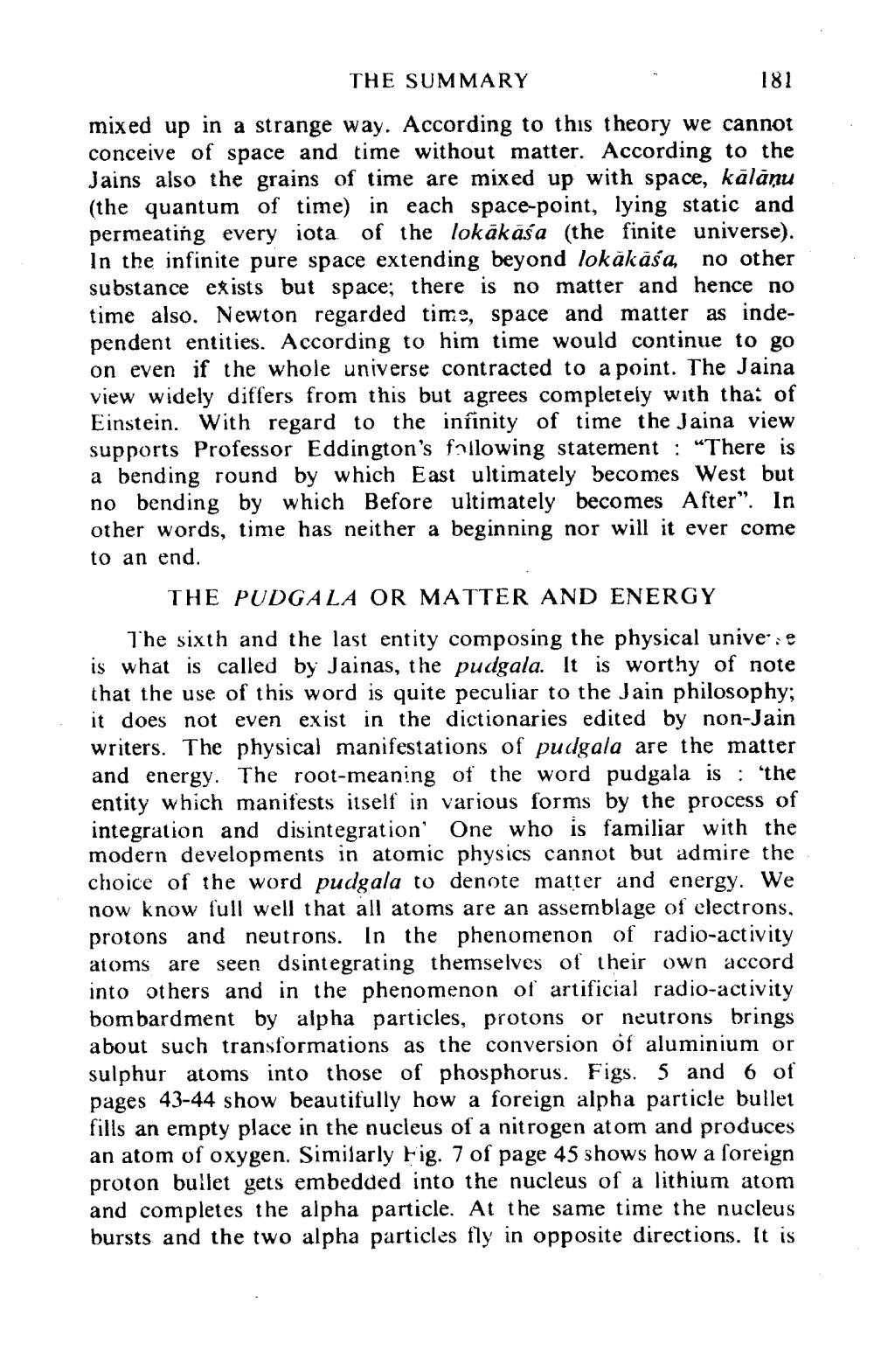________________
THE SUMMARY
181 mixed up in a strange way. According to this theory we cannot conceive of space and time without matter. According to the Jains also the grains of time are mixed up with space, kālāņu (the quantum of time) in each space-point, lying static and permeating every iota of the lokākāśa (the finite universe). In the infinite pure space extending beyond lokākāśa, no other substance exists but space; there is no matter and hence no time also. Newton regarded timo, space and matter as independent entities. According to him time would continue to go on even if the whole universe contracted to a point. The Jaina view widely differs from this but agrees completely with thai of Einstein. With regard to the infinity of time the Jaina view supports Professor Eddington's following statement : "There is a bending round by which East ultimately becomes West but no bending by which Before ultimately becomes After”. In other words, time has neither a beginning nor will it ever come to an end.
THE PUDGALA OR MATTER AND ENERGY The sixth and the last entity composing the physical unive: e is what is called by Jainas, the pudgala. It is worthy of note that the use of this word is quite peculiar to the Jain philosophy; it does not even exist in the dictionaries edited by non-Jain writers. The physical manifestations of pudgala are the matter
id energy. The root-meaning of the word pudgala is : "the entity which manifests itself in various forms by the process of integration and disintegration' One who is familiar with the modern developments in atomic physics cannot but admire the choice of the word pudgala to denote matter and energy. We now know full well that all atoms are an assemblage of electrons, protons and neutrons. In the phenomenon of radio-activity atoms are seen dsintegrating themselves of their own accord into others and in the phenomenon of artificial radio-activity bombardment by alpha particles, protons or neutrons brings about such transformations as the conversion of aluminium or sulphur atoms into those of phosphorus. Figs. 5 and 6 of pages 43-44 show beautifully how a foreign alpha particle bullet fills an empty place in the nucleus of a nitrogen atom and produces an atom of oxygen. Similarly Fig. 7 of page 45 shows how a foreign proton bullet gets embedded into the nucleus of a lithium atom and completes the alpha particle. At the same time the nucleus bursts and the two alpha particles fly in opposite directions. It is




